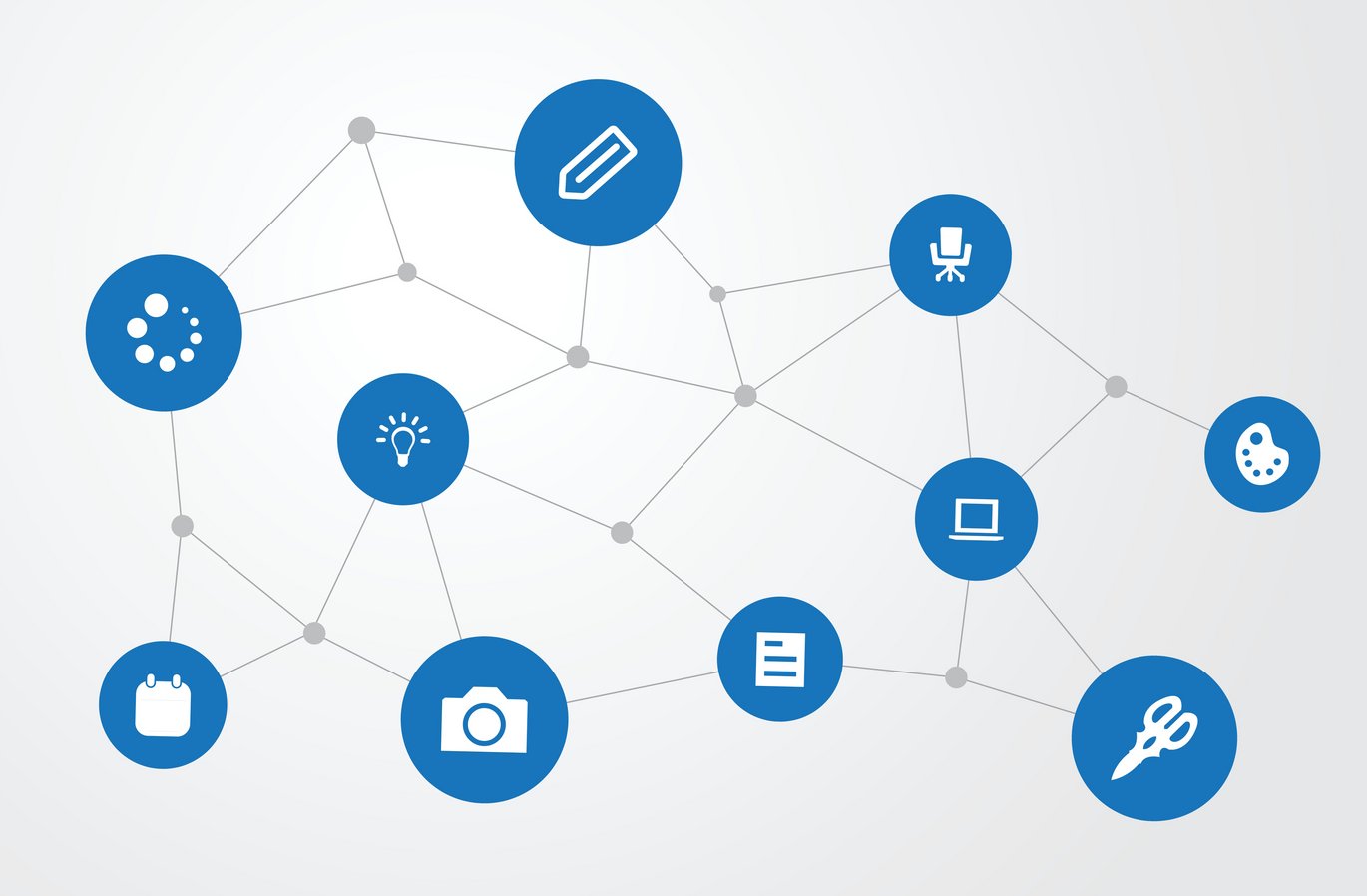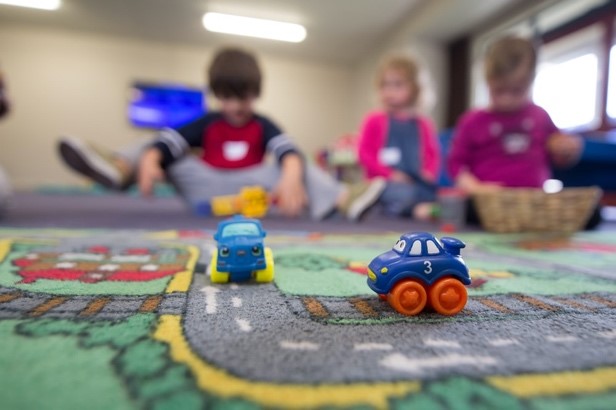Is working together key to the Nordic welfare model?
Maintaining high quality welfare organizations is tough even in the Nordic countries with a myriad of unforeseen challenges to contend with, including budget cuts, personnel issues and reorganization. The focus of New Public Governance on how to govern networks between public and private actors is useful. However, the managerial, organizational and constitutional levels need to be connected in a legal framework where more organic and democratic collaborative processes can also be forged – leading to ‘co-production’. Research from Denmark can be helpful here: It has highlighted how collaboration between municipalities and independent day care institutions can meet both contractual issues as well as more unforeseen demands which come from society, parent-led boards and interest organizations. It is possible to achieve successful co-production through new ways of regulation which also safeguard public value, but it is crucial that it is developed and nurtured on both an operational and political level.

The Scandinavian welfare model is largely one where welfare services are financed by the public sector and are a mix of public welfare institutions and those that are independent. Independent institutions in this context are those which are not directly under the umbrella of the state, but receive differing levels of funding from it and are managed by volunteer committees. In Denmark, approximately 40 percent of welfare tasks are done by various types of independent organizations and the rest mainly by the public sector . All citizens theoretically have equal access to welfare services such as education, health, and social services.
In many Western welfare states, as well as in Denmark, a number of initiatives have been launched in recent years under the heading ‘co-production’. Usefully, Verschuere, Brandsen, & Pestoff (2012) distinguish between three 'bottom lines' in carrying out co-production, namely democracy - in the form of legitimacy and participation, and efficiency - understood as savings and better quality of welfare benefits, and innovation – with respect to new solutions to social and welfare challenges. The purpose is to develop co-operation across the public and independent sectors, which likewise provide public value.
How do we define ‘public value’?
New Public Governance literature can be helpful in deciding exactly what ’public value’ is. Scholars have emphasized that the understanding of value can vary between actors, and what is value for one is not necessarily value for another. American Professor Mark Moore has discussed that public value can be thought of in two main ways:
1. First, what the public values.
2. Second, what adds value to the public sphere.
Put another way, it is firstly about "what society values", and secondly "what adds value to society”. An emphasis is rightly placed on the community rather than the individual, and the public sphere rather than the hierarchy of institutions or an individual welfare institution (that is usually seen as the primary unit for public value creation). Values cannot be defined in advance, but they must be formulated through evolving processes between the administration and citizens.
Some scholars have argued that this challenges the role of a range of actors who are all expected to contribute to the creation of societal value, because legitimacy must be continuously created and cannot only refer to representative democracy (See Pedersen, 2019, for example). Brandsen, Steen & Verschuere (2018) say that there is evidence to show co-production can produce public value, but there is a need to substantiate this further particularly with a greater understanding of the significance of law and legislation.
Niklas Luhmann's systems theory
Another theoretical approach in understanding co-production and public value takes its starting point in Niklas Luhmann's systems theory, where a key area for research in a Danish context is how to understand the role of the legal system in carrying this out. Niklas Luhmann’s theoretical approach is useful as it helps to analyse in detail what goes on in practice, and how to understand judicial regulation as co-production by focusing on the various so-called ‘law programs’ he highlights.
According to Niklas Luhmann's systems theory, society has developed through several phases. Today, it is divided into different functional systems where there is basically no hierarchical ranking between them. Key functional systems include the political system, the economic system, the care system, the pedagogical system, the love system, and, finally what is particularly important here, the legal system.
Luhmann’s legal system is dependent on time and place, and has developed over several manifestations with different regulatory notions such as formal, substantive, reflexive and hybrid law. One manifestation does not necessarily replace the other, but can coexist in different ways. Formal and substantive law refer to conditions that have been agreed upon as legal obligations in contract and legislation previously, such as a contract describing that a worker in a day care institution has to look after eight children in each room every day in the next year. With reflexive and hybrid law, the direct judicial regulation withdraws in order for parties to be able to handle unforeseen challenges, such as, a corona pandemic where it is only safe to look after four children in each room. Formal and substantive law often have to withdraw when regulating collaborative working, and researchers point out that law as a system today is being differentiated; It is gradually withdrawing and opening up to other function systems and rationales which regulate different types of welfare collaborations. There are of course additional and complex differences between Luhmann's four law programs, but these are not necessary to explain for the purposes of this article.
A Danish co-production project
A project from 2011 to 2015 took place with 100 independent day care institutions, three municipalities and research which I carried out based at Copenhagen Business School in Denmark. The focus was on co-production, that is, a collaboration that develops in a sustainable way from a managerial, pedagogical and financial point of view – and also with involvement from civil society. In this way an ambition from the outset was that public value would be created by working together across the public and independent sectors. The primary practical aims were loosely as follows:
- At the operational level, the 100 independent day care institutions were to be divided into 16 networks. Managers and Deputy Managers had to participate in managerial training. The exam assignment was the development of network agreements and new job descriptions supporting co-production. Half of the managers had to be made redundant.
- At a policy level, six workshops had to be organized with the project's interest organizations. Every six months, the activities were to be followed up, and aims formulated for how future co-production could be discussed.
- A paper-based study was undertaken examining documents regarding the collaboration between the independent day care institutions and municipalities between 2005 and 2015 (that is, before and during the project), including, for example, reports, training plans, exam assignments, and meeting notes.
The collaboration between the independent day care institutions and municipalities was characterized by two paradoxes. Firstly, the municipalities wanted the day care institutions to be independent and something different than the municipality – outside its parameters. Meanwhile, at the same time, they should not be too separate; they had to keep within the municipality’s guidelines. The second paradox was that the legal basis upon which the co-operation was built needed to provide regulation for the extensive activities without actually forcing the parties involved.
Different types of 'law' in play at the same time
A semantic and program analysis showed that, on the one hand, Luhmann’s formal and substantive law were at play as there was ongoing collaboration over contracts and legislation. At the same time, law also involved reflective elements such as self-reflection and considering whether the type of regulation used was appropriate in the circumstances etc. The co-production project became a program for a type of hybrid law, which could be seen as both law and non-law, and which would regulate the cooperation with elements from Luhmann’s four legal programs (namely, formal, substantive, reflexive and hybrid) at the same time.
In this way, the task of looking after children became more fluid than simply being written down in contracts and regulations about conditions; public value was no longer fixed in the way it had been before and the way the work was seen and the approach taken made it possible to respond effectively not only to today's problems, but also tomorrow's (See Biil, 2020 for more on this).
An analysis of the new collaboration structures which were emerging while the co-production project was being undertaken showed that this new way of cooperating between the independent day care institutions and the municipality was also able to inspire the parties at a political level to let their overarching cooperation be regulated differently by the way it was framed locally.
The collaboration developed at the operational level could also inform that which was developed at the policy level and vice versa. This way of cooperating alternated: It could refer to contractual law and legislation on the welfare task to be provided. However, it could also reach out in time and deal with what was not agreed upon in advance because the respective organizations allowed room for decision-making to be informed, and took into account what was important to the parties - other elements than just formal or substantive law.
Erna's green gift
The new collaboration structure was illustrated by how The Lighthouse - a network of independent day care institutions - received an allotment garden as a gift from an elderly lady, Erna, because they did not themselves have a garden where the children could play. Normally neither the municipal day care institutions nor independent day care institutions were legally allowed to receive such a gift – but here it became possible anyway. In other words, the independent day care institutions receiving the gift became an example of law withdrawing and letting other semantics take over.
With the transfer of Erna's allotment garden, both the municipality and The Lighthouse were able to deviate from the contract and legislation that normally regulated their collaboration. Instead, they had activated another way of collaborating; they let what was important to each other respectively become the decisive point allowing the allotment garden to be a place for the children to play.

The ability to transform as key - like a butterfly
A positive story, but it may well be that The Lighthouse's work with children in Erna's allotment garden will not be considered as public value in five years’ time. I have put forward a model called the Butterfly Model which reflects that, in Denmark, there is a 'DNA' deriving from a long tradition in the voluntary, independent and public sectors to cooperate on welfare tasks. However, it is a collaboration that needs to be dynamic if it is to be able to live up to the many ongoing and changing demands and opportunities in today's society. The Butterfly Model emphasizes this ongoing transformation in organizational collaboration across many layers illustrated by the development from pupa, to caterpillar to butterfly; because it has a flexible core – like DNA – that can make this possible.
With the Butterfly Model as a model for welfare, the operational and political elements must connect and work together at an overall constitutional and legislative level, at an organizational and strategic level, as well as in managerial and collaborative practice. Co-production on welfare means navigating the boundary between law and non-law at the same time, accepting that what can be named public value today, will not necessarily be the case tomorrow.
Co-production for public value is a collaboration: it can be seen as a painter’s palette where the colors set out the requirements of a welfare task in relevant contracts and legislation, but these are combined with new requirements continuously merging in from society that are constantly changing in the present and the future. Many systems theory researchers point out that, in today's society, contingency is largely solved through organizations, and that the only thing that is certain is that security lies not in determining the future with precision, but in exploiting its openness. This is what hybrid law makes possible. However, the project also showed that successful co-production as public value does not just happen. Such a collaboration has to be understood, taught, fed and nurtured to be successful – in order for the DNA to do its job.
Further reading:
- Andreas Philippopoulos-Mihalopoulos, ‘Niklas Luhmann: Law, justice, society’, 1:237 (2009)
- J. Benington and M.H. Moore, eds., Public Value. Theory and Practice (Palgrave Macmillan, 2011).
- B. Ibsen and U Habermann, Definition af den frivillige sektor i Danmark' [Definition of the voluntary sector] in T. Boje, T. Fridberg and B. Ibsen, eds., Den frivillig sektor i Danmark - omfang og betydning [The voluntary sector in Denmark - scope and meaning] (Copenhagen: Socialforskningsintitut; 2006).
- Bram Verschuere, Taco Brandsen and Trui Steen, Co-Production and Co-Creation: Engaging Citizens in Public Services (London: Routledge, 2018).
- Bram Verschuere, Taco Brandsen and Victor Pestoff (eds.), New Public Governance, the Third Sector and Co-Production, (London: Routledge, 2012).
- Charlotte Biil, ‘Co-production with a Butterfly model. Hybrid Law with reference to a partnership project between 100 voluntary day care institutions, their umbrella organisation, three municipalities and Copenhagen Business School.’, Ph.d., Department of Management, Politics and Philosophy - Copenhagen Business School, (2020).
- Eli Turkel and Gerald Turkel, ‘Public Value Theory: Reconciling Public Interests, Administrative Autonomy and Efficiency’, Review Pub Administration Manag, 4, 189 (2016). doi:10.4172/2315-7844.1000189.
- M.H.Moore, Creating public value: strategic management in government (Harvard University Press; 1995).
- D. Pedersen, 'Offentlig Værdiskabelse - Ledelsesudfordringer i den fordoblede forvaltning' [The creation of public value - Leadership challenges in the in management] K. Mellon, ed., Den modige leder [The brave manager](Copenhagen: Dafolo, 2019).
Links:
- Why has the Danish welfare model remained so strong against Covid-19 Article by the author in English about the Butterfly Model on sciencenordic.
- Hvorfor har den danske velfærdsmodel været så stærk under corona? [Why is the Danish welfare model so strong during Corona?] Article by the author in Danish on videnskab.dk's Forskerzonen.
